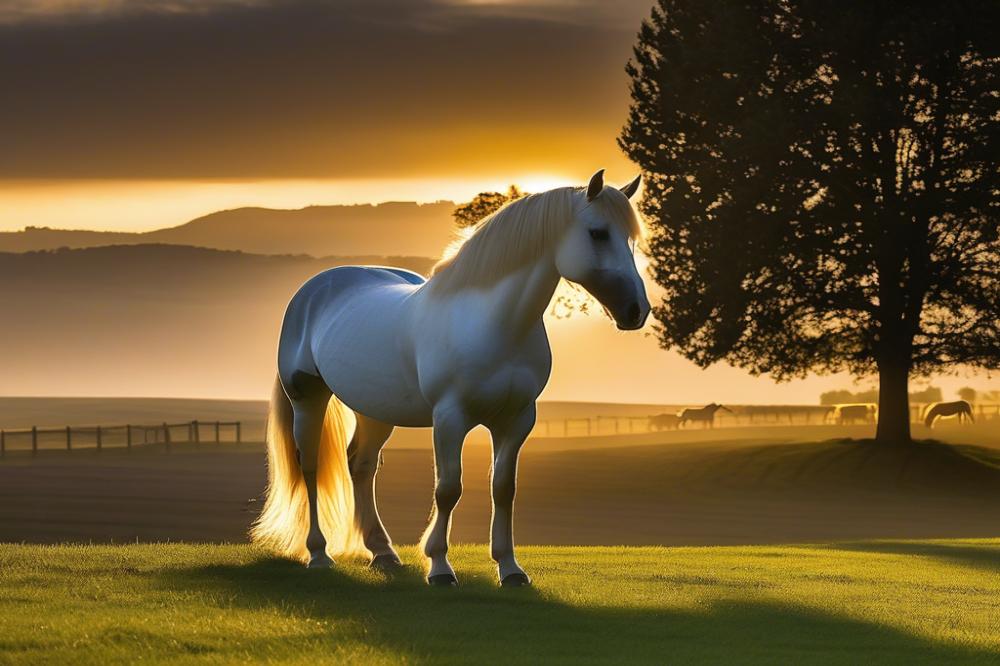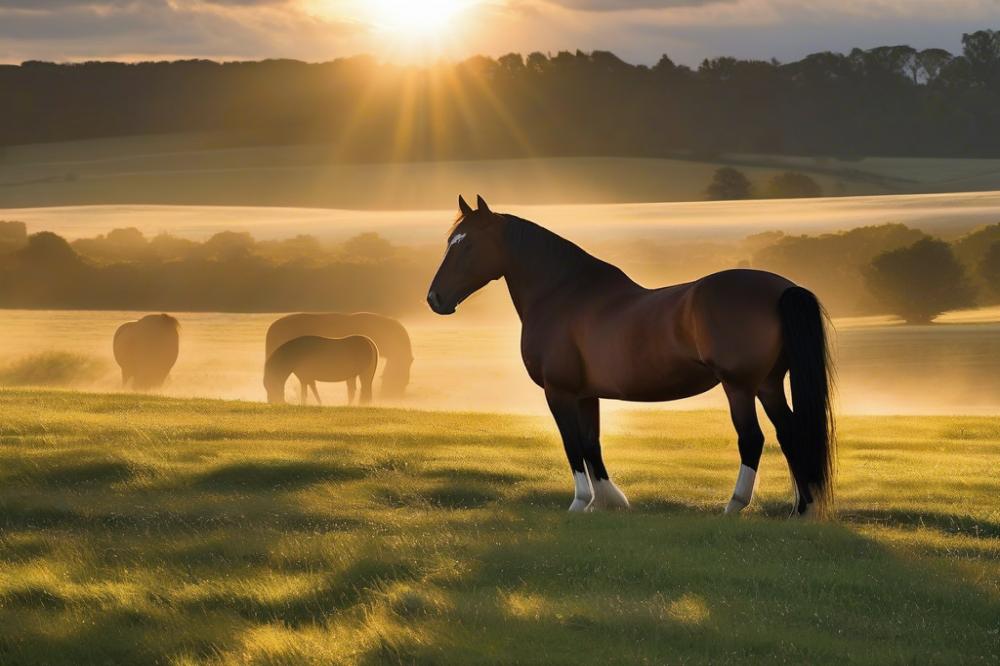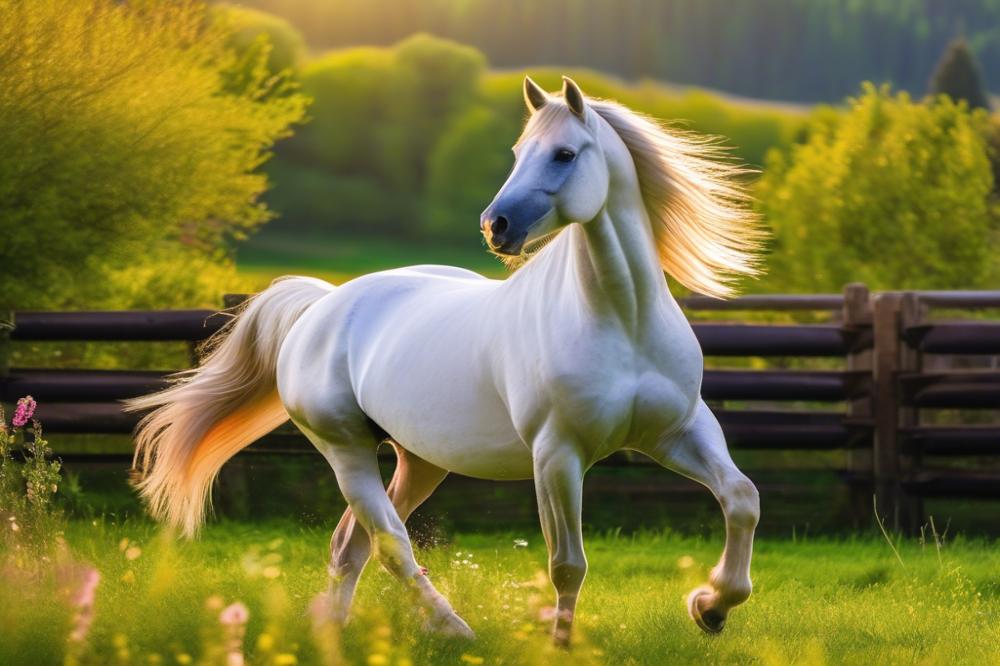Introduction
stallion management plays a vital role in horse breeding. This aspect of equine care focuses on selecting, maintaining, and monitoring male horses for reproduction. It requires careful attention to detail. Each stallion possesses specific genetics that contribute to the traits seen in offspring. Therefore, the process is much more than just pairing a stallion with a mare.
Breeding outcomes depend largely on how well stallions are managed. Effective protocols promote the health and performance of these animals. Healthier stallions typically produce healthier foals. Careful handling and proper nutrition are essential aspects of management. Each decision made during this process impacts future generations of horses.
Stallions contribute significantly to equine genetics. Their characteristics influence a wide range of behaviors, physical attributes, and abilities in foals. By focusing on breeding optimization, breeders can strategically select stallions to enhance desirable traits. Such traits could include speed, stamina, and temperament. Understanding the genetic value of each stallion can guide breeders in making informed choices.
Ultimately, responsible management practices lead to successful breeding programs. The success of these programs reflects the quality of the stallions involved. As knowledge grows in this field, so does the potential for improving horse breeds. Thus, effectively managing stallions is not just beneficial; it is essential for those aiming to excel in breeding.
stallion management

Stallion management refers to the comprehensive care and oversight of breeding stallions. Proper management is crucial for breeding success. It involves various aspects such as housing, handling, and daily care practices. Each component plays a significant role in maintaining the stallion’s overall well-being.
Housing
Housing a stallion must meet specific requirements. The living space should be spacious and secure. Stallions benefit from a clean and dry environment. Good ventilation is necessary to promote healthy air quality. An appropriate housing setup reduces stress and encourages optimal behavior.
Handling
Handling stallions requires skill and confidence. Each animal may react differently to human interaction. Gentle, consistent handling fosters trust. Safety is also a priority, as stallions can be unpredictable. Developing a bond with the stallion leads to better cooperation during breeding sessions.
Daily Care
Daily care routines are essential for maintaining a stallion’s health. Feeding should be balanced and nutritious to support energy needs. Regular grooming helps to monitor for any health issues. Daily exercise is also important to keep stallions fit and mentally stimulated. This care contributes to overall happiness.
Health and Breeding Success
The health of a stallion directly influences breeding success. A stallion in poor condition may have reduced fertility. Regular veterinary check-ups are vital for early detection of any health issues. Keeping vaccinations up-to-date protects against disease. In addition to physical health, mental well-being also affects breeding efficiency.
Good management practices create a solid foundation for breeding efforts. Focused attention on housing, handling, and care can enhance reproductive performance. Healthy stallions are likely to produce strong and viable offspring. Every detail matters in stallion management to achieve optimal results.
Stallion Selection

Selecting the right stallion is critical for successful breeding programs. Various factors contribute to this important decision. Evaluating the stallion’s pedigree is one crucial aspect. A strong lineage can indicate quality traits that may be passed down. Breeders often look at the success of the stallion’s ancestors in competitions or races.
Conformation also plays a vital role in selection. Proper physical structure can affect a horse’s health and performance. Horses with desirable traits often show better athletic ability. Observing the stallion’s body type helps breeders understand potential offspring. Assessing height, weight, and overall appearance contributes to informed choices.
Performance records must not be overlooked. A stallion with a strong competition history may produce capable offspring. This data can include race times, event results, and any titles won. Those records serve as a benchmark for evaluating the stallion’s abilities.
Temperament is equally important in the selection process. A gentle and trainable stallion is often preferable. Traits such as calmness and willingness influence how foals develop. Horses inherit both genetics and behavior, making temperament a key factor.
Another significant aspect is the role of genetic diversity. Breeding from a diverse genetic pool can help reduce the risk of inherited disorders. It also promotes healthier offspring. Selecting stallions from varied backgrounds helps maintain this diversity. This practice is essential for the longevity and vitality of the breed.
Consideration of all these factors is crucial. Stallion selection is not a task to take lightly. Each decision can have a lasting impact on future generations. Balancing pedigree, conformation, performance, temperament, and genetic variety leads to better outcomes. Keeping all these criteria in mind helps breeders make wise choices.
breeding techniques

Different methods exist for breeding horses, each with its advantages and challenges. Traditional breeding often involves natural mating. This method relies on the stallion and mare meeting during the mare’s heat cycle. Breeders have used this technique for centuries.
Modern breeding has introduced artificial insemination (AI). With AI, semen is collected from the stallion and then introduced into the mare’s reproductive tract. This process allows for a broader range of genetic selection. It also enables the breeding of a mare and stallion that might be far apart geographically.
Natural breeding can create a strong bond. Stallions often show interest in their mate. This happens during a mare’s heat cycle, when she is most receptive. At this time, the chances of successful mating increase significantly. However, not every stallion is compatible with every mare.
Artificial insemination offers more options. It is particularly useful for thoroughbreds and other specialized breeds. Timing plays a critical role in both techniques, and synchronization of the mare’s cycles is essential for optimal results. Breeders use hormonal treatments to help regulate when mares come into heat.
Monitoring the mare’s reproductive cycle is key. A veterinarian often assists with this process. They can identify the best time for insemination. For natural breeding, knowing the mare’s cycle helps to bring her and the stallion together at the right moment.
Success rates can vary between methods. Some breeders might prefer natural mating due to its straightforward nature. Others may favor artificial insemination for the convenience it provides. Ultimately, the choice of technique can depend on individual circumstances such as availability of stallions or specific breeding goals.
Equine Genetics
Understanding equine genetics is essential in breeding. Each horse inherits traits from its parents. These traits can influence everything from performance to health. Breeders must consider these genetic factors when selecting stallions. The breeding process can produce offspring with desirable characteristics or problems.
Genes are made up of DNA and come in pairs. One gene comes from the mother, and the other comes from the father. Specific combinations can lead to particular traits. For example, a horse may inherit speed genes or certain color patterns. Recognizing this inheritance pattern helps breeders make informed choices.
Genetic testing plays a critical role in modern breeding. It can identify traits that might not be obvious through visual inspection. Testing can reveal potential health issues too. Knowing these details enables breeders to select stallions that best meet their goals. Evaluations, such as those done for genetic traits, allow for better planning.
Testing for genetic disorders is crucial. Some genetic conditions can be costly and distressing. A stallion that carries a gene for a serious health issue could pass it to its foals. That’s why breeders must analyze genetic tests thoroughly. This approach helps to maintain the overall quality of the breeding program.
Another aspect of genetics is the concept of heritability. Heritable traits can be passed down through generations. Performance levels are not only due to training; they also have a genetic basis. Experienced breeders know that certain genetics improve a horse’s chances of success in competitions.
Evaluating stallion potential involves looking at pedigree as well. The family history of a horse can indicate how it might perform. If a stallion comes from a line of champions, it may pass those traits to its offspring. This creates a more stable outcome for breeders aiming for excellence.
In summary, genetics serves as the foundation of breeding. The science behind it helps breeders make choices. By understanding genetic traits, the results can be more predictable. Using proper testing and evaluation methods helps ensure better outcomes in breeding programs.
Reproduction Technology
Reproduction technology plays a critical role in modern breeding practices. Understanding this technology can help optimize breeding outcomes. Key components include semen collection, storage, and handling techniques used in artificial insemination.
Semen collection is the first step. Many methods exist, but the most common involves using an artificial vagina. Stallions must be properly stimulated to produce high-quality samples. Afterwards, technicians evaluate the semen for motility and overall health. This evaluation helps to identify the best samples for future use.
Storage is equally important. Semen can be preserved in several ways, including refrigerated and frozen methods. Refrigerated semen typically lasts a few days. However, frozen semen can last indefinitely when stored correctly. The freeze-thaw process can affect its viability, so it must be performed carefully.
Handling is crucial to maintain semen quality. Proper techniques must be followed to prevent overheating and contamination. Specialized containers are often used during shipping. These containers help control temperature and protect against physical damage. Each step must be executed with precision.
Innovation in Reproductive Techniques
Recent advancements in reproductive technology have significantly impacted breeding practices. New techniques are emerging that offer more options for breeders. For instance, intracytoplasmic sperm injection (ICSI) allows for direct fertilization of oocytes. This method can increase pregnancy rates in mares.
Additionally, techniques like semen sexing have gained popularity. This allows breeders to select the desired sex of the offspring. This innovation can lead to more efficient breeding programs. By choosing the gender of foals, breeders can focus on specific goals and enhance their breeding stock.
These advancements demonstrate how technology continually reshapes reproduction management. Staying updated on innovations is essential for successful breeding. The integration of scientific research with practical applications leads to improved outcomes. As these technologies evolve, they will likely become more routine in stallion management strategies.
Mare Management
Effective management of mares is crucial in breeding programs. A well-organized approach leads to better outcomes. There are many strategies to consider. Selecting the right mares can make a significant impact on breeding success.
One important factor is health care. Regular veterinary check-ups should occur to monitor the general well-being of each mare. Vaccinations and deworming are critical components of health management. Staying proactive helps to prevent illness and ensures mares are primed for reproduction.
Nutritional needs cannot be overlooked. A balanced diet supports optimal health and reproductive performance. Mares require specific nutrients, such as protein, vitamins, and minerals. Quality hay and grains are essential. Consideration of body condition is valuable, as underweight or overweight mares may struggle to conceive.
Reproductive considerations must also be addressed. Timing is key. Monitoring the estrous cycle allows for better planning of breeding. Proper detection of heat can increase the chances of successful mating. Familiarity with each mare’s cycle patterns guides this process.
In addition, it is beneficial to keep records. Maintain detailed notes on each mare’s health, breeding history, and any foaling complications. This information can support future decisions in managing the mare effectively. Communication with staff involved in daily care is equally important. They can provide insights and updates regarding each animal’s status.
Finally, an environment conducive to breeding plays a role. Comfortable living conditions reduce stress. This includes adequate space, shelter from extreme weather, and access to the herd. Mares that feel secure are likely to thrive. Attention to these elements promotes a healthy and productive breeding program.
Veterinary Care
Veterinary care plays a vital role in managing stallions effectively. Regular health checks help identify potential issues before they become serious. A veterinarian can assess the overall health and condition of a stallion. This is important for ensuring the animal is fit for breeding.
Vaccinations are essential to protect against various diseases. Well-vaccinated stallions are more likely to maintain good health. Keeping vaccination records updated can aid in tracking the animal’s health history. Working closely with a veterinarian is crucial to determine the appropriate vaccination schedule.
Reproductive health assessments are necessary for evaluating a stallion’s breeding capabilities. Tests can include semen analysis and examinations of the reproductive organs. These assessments provide insights into fertility and overall reproductive function. Addressing problems early boosts the chance of successful mating.
Common reproductive issues can affect stallion performance. For instance, problems like low sperm production or infections can arise. Quick intervention can often resolve these matters effectively. Regular monitoring allows owners to stay ahead of potential complications.
Understanding the specific needs of each stallion is important. Each horse may require individual attention and tailored care. Communication with a veterinarian can provide guidance on best practices. Establishing a solid health management plan promotes optimal health and productivity.
In conclusion, veterinary care is an essential pillar of stallion care. Consistent health checks, vaccinations, and reproductive assessments enhance breeding success. Cooperation with veterinary professionals opens avenues for better outcomes in breeding programs.
Equine Nutrition
Nutrition plays a crucial role in the health and fertility of stallions. A well-balanced diet influences their physical condition and reproductive success. Feeding stallions the right nutrients can impact everything from libido to sperm quality. This aspect of horse care deserves careful attention.
Several key dietary components support optimal breeding performance. Protein is essential as it contributes to muscle development and overall body condition. Quality forage, such as hay or pasture, provides necessary fiber for digestion. Essential vitamins and minerals, like vitamin E and selenium, also aid reproductive health. These nutrients help maintain the stallion’s immune system, which can affect breeding outcomes.
Developing a balanced nutrition plan is vital. Start by assessing the stallion’s age, weight, and activity level. Individual needs vary, so a one-size-fits-all approach may not work. Consulting with an equine nutritionist can provide valuable insights tailored to specific requirements. The goal is to create a diet that meets all nutritional needs without excess.
Incorporating grains and supplements may enhance the diet. Grains can provide additional energy for active stallions, especially during breeding season. Care should be taken to introduce grains gradually to avoid digestive upset. Adding specific supplements designed for breeding stallions can also promote fertility and general well-being.
Monitoring the body condition score is important. Regular evaluations help to adjust the diet as necessary to maintain optimal weight. An underweight or overweight stallion may experience fertility issues. Adjustments should be made based on these observations.
Offering fresh water daily is an often overlooked factor. Hydration is key to maintaining overall health and performance. Stallions should have access to clean water at all times, especially during hot weather or after exercise.
Make sure to keep feeding schedules consistent. Regular feeding times can help establish a routine which is beneficial for the stallion’s digestive health. Furthermore, avoiding sudden changes in diet is critical. Gradual transitions help to prevent stress and digestive disturbances.
In summary, equine nutrition for stallions directly impacts their breeding capabilities. A focus on a balanced diet, appropriate supplements, and hydration lays the foundation for a successful breeding program. Feeding practices towards stallions should be managed with care and consideration to promote their health and performance.
Performance Evaluation
Evaluating the performance of a stallion is essential for success in breeding. Various methods can be used to assess how well a stallion performs. One common approach is to look at the track records of the stallion. Race results can provide clear insights into the capabilities of the stallion. Measuring the times achieved in races offers valuable data that can indicate potential for passing on speed to offspring.
Colts and other offspring also serve as significant indicators of a stallion’s success. Their performances in races or competitions reflect the genetic traits inherited from their sire. Monitoring these results can help identify which stallions produce top performers. Each generation offers a new chance to evaluate and improve breeding strategies. This results in a cycle of better horses over time.
Conformation is another crucial factor in performance evaluation. This term refers to the physical structure of the horse. A stallion with ideal conformation can indicate stronger offspring. Balanced structures generally lead to better athletic performance. Paying attention to the physical traits of the stallion helps in predicting the outcomes for colts.
It’s also helpful to keep thorough records of each stallion’s breeding history. These records should include information about the mares they have covered and the results of those breedings. Collecting this data can give breeders a clearer picture of a stallion’s overall influence. The stallion’s offspring performance, when viewed in combination with track records and conformation, creates a more complete picture of potential. Understanding this multi-faceted approach can lead to better decisions in the breeding process.
Final Thoughts on Effective Stallion Management
Successful breeding outcomes depend on a wide array of factors. Throughout this article, we highlighted the significance of proper care, nutrition, and health monitoring. Each aspect plays a critical role in optimizing breeding potential. A well-rounded approach can maximize the performance and reproductive success of a stallion.
Integration of advanced breeding techniques alongside traditional methods enriches the breeding process. Knowledge of equine genetics also enhances decision-making. Breeders should familiarize themselves with genetic traits to improve lineage quality. Judicious selection based on these principles leads to healthier offspring.
Continuing education is essential in this constantly evolving field. Industry standards change, and new research emerges regularly. Staying updated with current practices will elevate overall management strategies. Adaptability can lead to better results and help meet the specific needs of each stallion.
In summary, taking a holistic view in breeding provides the best chance for success. Gather insights from various resources and networks. Engage with fellow breeders and equine specialists to broaden your understanding. Collaborative efforts can foster innovation in stallion care. Every breeder has a unique journey, and the willingness to learn is a valuable trait.



